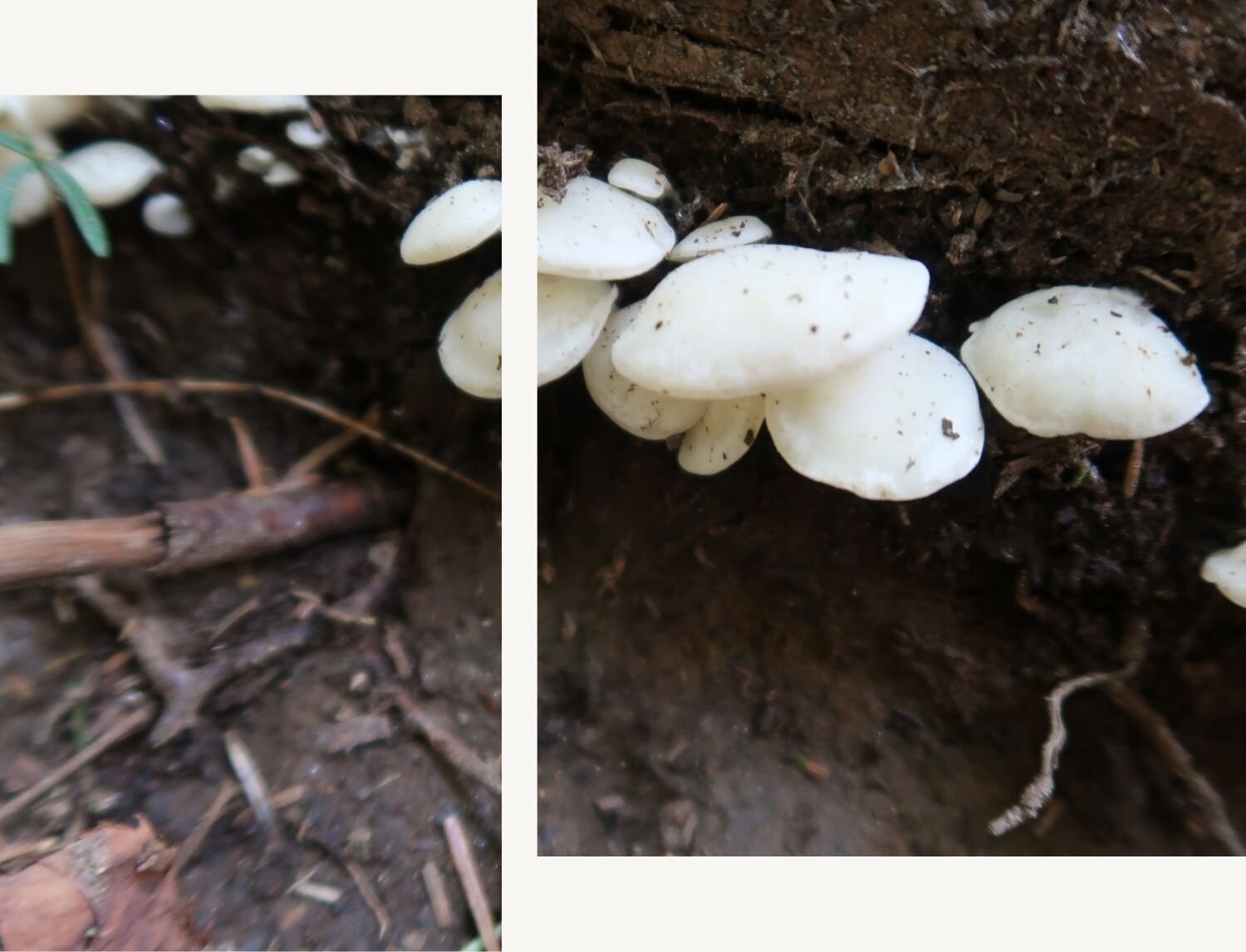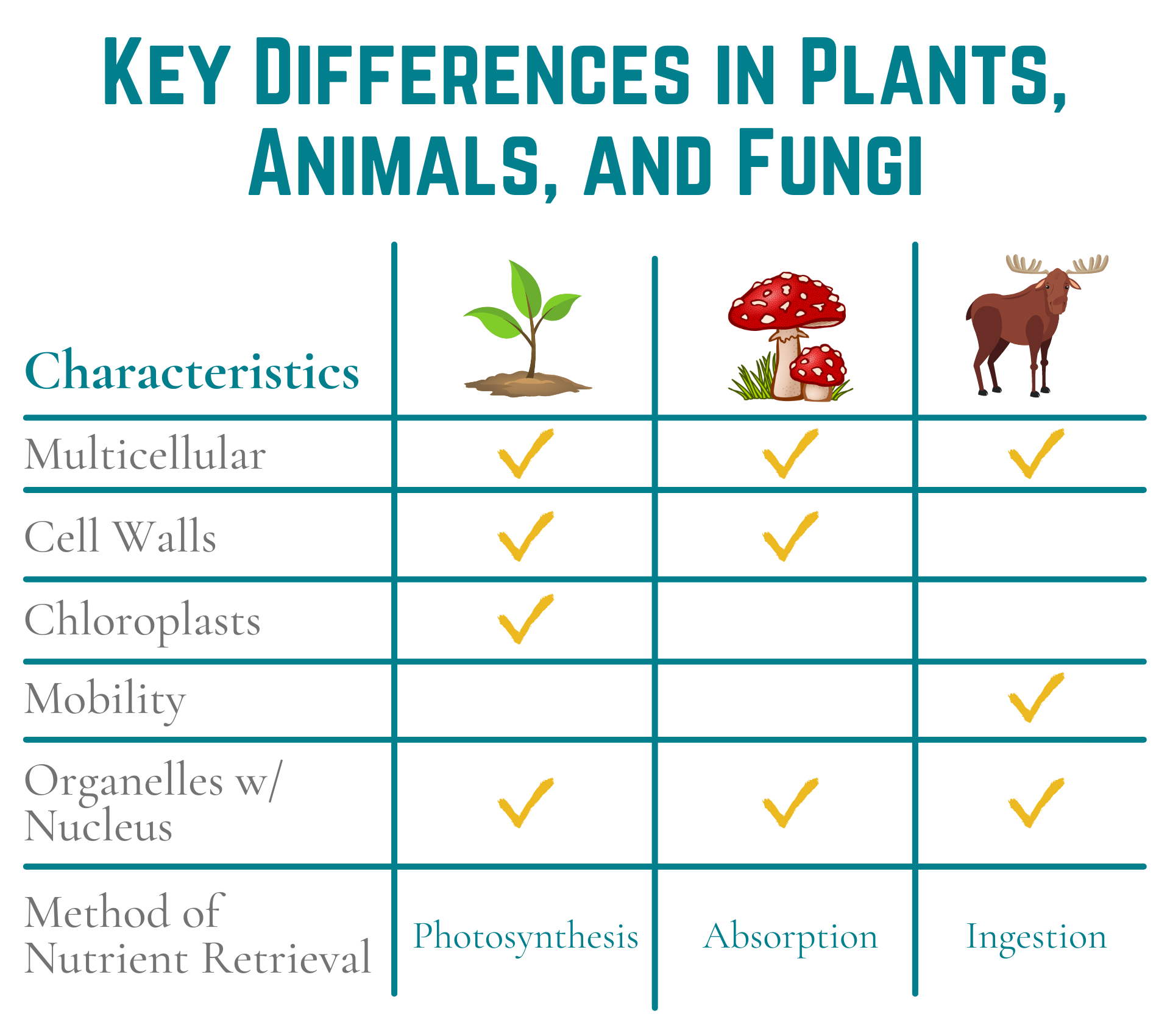Let’s Have Some FUN-gi!!!!
What does Black Witches’ Butter, Turkey Tail, Veiled Lady, and Bleeding Tooth all have in common? Nope, they’re not the latest musicals headed to Broadway. Nope, they’re not names of racing horses either. But they are all...
FUNGI!
You read that right! They are all different species of fungi!
Of all the different things you’ll encounter in the great wild outdoors, fungi is probably the most unique. Fungi (which is the Latin word for mushroom) were once part of the Plant Kingdom. Remember back to your Biology 101 days when there were the Plant and Animal Kingdoms (there’s also the Protista and Monera Kingdoms but who wants to remember those?). All the fungi in the world were put under the Plant Kingdom since they act similarly to plants: they’re immobile, they grow in soil, and they have cell walls.
And yet, they’re very different. And what’s more unique is that scientists now realize that they also act similarly to those species in the Animal Kingdom (they have chemicals in their cell walls that are shared with lobsters and crabs). Hence, why fungi needed their own kingdom.
What exactly makes fungi, fungi?
Fungi is so unique that it has similar traits to both plants and animals but also doesn’t fully fall under either classification. Fungi are multicellular as are plants and animals. They have cells with a nucleus (so do plants and animals). They don’t have any chloroplasts (like animals but unlike plants) which are the sites where photosynthesis takes place. They have no mechanism for movement (like plants but unlike animals). The list goes on!
Did you know that the part of the fungus (the singular noun for fungi) we usually see is, in fact, only the fruiting body of the fungus. The living body of the fungus is called a mycelium which is made out of a web of tiny filaments called hyphae. These can be as small as a grain of rice or as large as an entire football field (or even larger).
It’s estimated that there are almost 4 million species of fungi in the world and yet more than 90% of them are still unknown to science (meaning we’ve only documented less than 10%).
Whaaaaaat???
Why are fungi so important?
Fungi are so bizarre. Their life cycle is much different than other organisms. They feed off of dead, decaying materials and yet create so much life. It’s a real conundrum. But through research, scientists know that fungi underpin life on Earth.
See, fungi thrive on getting their nutrients through absorption and are usually done so on decaying material. They are responsible (along with many bacteria) for breaking down organic matter and releasing carbon, nitrogen, oxygen, and phosphorus into the soil and the atmosphere. These elements are ESSENTIAL to life on earth.
There is a special, symbiotic relationship between fungi and plants (more specifically plant roots). Mycorrhizae forms within the root systems and help plants by increasing their water and nutrient absorption, while the plant provides the fungus with carbohydrates formed from photosynthesis. Without this relationship, trees and plants could not survive.
Plus, fungi can help control pest populations, specifically when it comes to insects. The fungus Beauveria bassiana is being tested to potentially kill off the devastating emerald ash borer (an insect that destroys ash trees). This could potentially save millions of trees that are integral to ecosystems across the world.
On top of all of that, fungi are DELICIOUS. Well, some of them at least (some are also deadly). A good ol’ portobello burger or some sauteed chanterelles make any dish that much more delectable! And if you’re rich, you can buy some of the most expensive food on the planet. The European white truffle, for example, goes for $1,500/pound since they’re only found in one region in Italy. Another one, coined the “Viagra of the Himalayas”, goes for upwards of $50,000/pound. But does it really work?? Scientists have yet to prove that it does.
Can fungi harm humans?
Many fungi can be beneficial to humans including edible mushrooms for use in stabilizing mental health irregularities. You’ll likely know about the famous mold behind the discovery of penicillin which has saved countless lives.
But some fungi have a much darker purpose and have wiped out tree/plant populations and brought certain animal species to the brink of extinction. Examples include the well-known leaf spot, blight, and root rot found throughout the United States (and the world). A chytrid fungus (Batrachochytrium dendrobatidis) has hit over 500 species of amphibians and have killed off a few dozen species throughout the past few decades. Other fungi can harm humans if eaten (there are several hundred deadly mushrooms in the world) or could infect us like athlete’s foot or coccidioidomycosis (a fungal disease more commonly known as fungal pneumonia).
Fun facts about fungi
So you’ve learned a lot about fungi, but here are some more interesting facts.
Female pigs were once used to sniff out the prized black truffles but had to be replaced with dogs since pigs would eat too many of these expensive nuggets.
There are a few species of fungus that have been discovered to break down plastics in a matter of weeks rather than decades (maybe some hope for the future!).
Legos are made using itaconic acid which is derived from a fungus.
Fungi are being used to turn crop waste into bioethanol.
The fungus, Trichoderma reesi, is sometimes used to make stonewashed jeans.
15% of all vaccines and therapeutic proteins are made in yeast (which is part of the fungi kingdom!).
Some cheeses, soy sauce, bread, tempeh, and beer are all made using fungi!
The fungus, Ophiocordyceps unilateralis, takes control of an ant’s brain and is more widely-known as “Zombie Ants Fungus”.
Honeybees are increasingly at risk for extinction so some mushroom tinctures are being tested on them to protect them from a virus-carrying mite.
Mycorrhizal fungi (remember that symbiotic relationships between fungi and plants) are channels in which trees can actually talk to each other. They warn trees around them about pests, drought, and disease.
So next time you’re out in the wilderness, take a peek at the sides of the trail or look more closely at that downed log - you might just see a whole new world!
In addition to acting as WildKind's in-house renaissance woman (her current titles include: sustainability expert, fundraising machine, and social media guru), Sarah is an accomplished writer, ecologist, and outdoor advocate. She is currently working on completing the 4ooo footers in the White Mountains in her home state of New Hampshire. Follow along on her and her son's adventures on Instagram: @mtns2motherhood and @publiclands_loveyou






